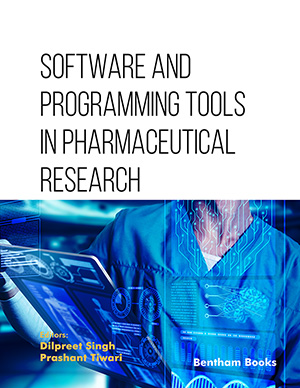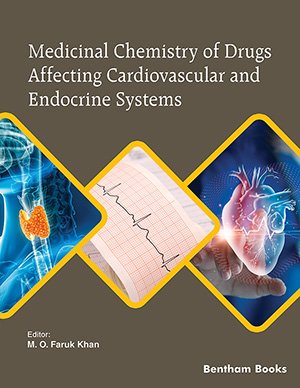
Abstract
Angiogenesis is a complex process which is critical for the growth, invasion, and metastasis of tumors. In the past ten years numerous new agents have been developed as angiogenesis inhibitors. Angiogenesis inhibitors can be classified by their targeted area of the angiogenic process; (1) VEGF and its receptors VEGFR (e.g. Bevacizumab); (2) tyrosine kinases within endothelial cells (Sunitinib); (3) proliferation of endothelial cells (Endostatin); (4) MMPs (Marimastat); (5) intercellular interactions via integrins (Cilengitide) and (6) combinations of the above mechanisms (Thalidomide). Some showed anti-tumor effects with objective responses and stable disease, and some disappeared from clinical use due to unexpected side effects or insufficient efficacies. Further investigations of combined therapies including angiogenesis inhibitors will shed light on the treatment of advanced and metastasized malignancies.
Keywords: Anti-angiogenic agents, neoplasm, vascular endothelial growth factor (VEGF), matrix metalloproteinase (MMP), thalidomide
Current Pharmaceutical Design
Title: Clinical Approaches Toward Tumor Angiogenesis: Past, Present and Future
Volume: 14 Issue: 36
Author(s): Yasuyuki Fujita, Riichiro Abe and Hiroshi Shimizu
Affiliation:
Keywords: Anti-angiogenic agents, neoplasm, vascular endothelial growth factor (VEGF), matrix metalloproteinase (MMP), thalidomide
Abstract: Angiogenesis is a complex process which is critical for the growth, invasion, and metastasis of tumors. In the past ten years numerous new agents have been developed as angiogenesis inhibitors. Angiogenesis inhibitors can be classified by their targeted area of the angiogenic process; (1) VEGF and its receptors VEGFR (e.g. Bevacizumab); (2) tyrosine kinases within endothelial cells (Sunitinib); (3) proliferation of endothelial cells (Endostatin); (4) MMPs (Marimastat); (5) intercellular interactions via integrins (Cilengitide) and (6) combinations of the above mechanisms (Thalidomide). Some showed anti-tumor effects with objective responses and stable disease, and some disappeared from clinical use due to unexpected side effects or insufficient efficacies. Further investigations of combined therapies including angiogenesis inhibitors will shed light on the treatment of advanced and metastasized malignancies.
Export Options
About this article
Cite this article as:
Fujita Yasuyuki, Abe Riichiro and Shimizu Hiroshi, Clinical Approaches Toward Tumor Angiogenesis: Past, Present and Future, Current Pharmaceutical Design 2008; 14 (36) . https://dx.doi.org/10.2174/138161208786898680
| DOI https://dx.doi.org/10.2174/138161208786898680 |
Print ISSN 1381-6128 |
| Publisher Name Bentham Science Publisher |
Online ISSN 1873-4286 |
Call for Papers in Thematic Issues
Advances in the Molecular Pathogenesis of Inflammatory Bowel Disease.
This thematic issue will emphasize the recent breakthroughs in the mechanisms of Inflammatory bowel disease (IBD) pathogenesis and devotes some understanding of both Crohn’s and ulcerative colitis. It is expected to include studies about cellular and genetic aspects, which help to precipitate the disease, and the immune system-gut microbiome relations ...read more
Blood-based biomarkers in large-scale screening for neurodegenerative diseases
Disease biomarkers are necessary tools that can be employ in several clinical context of use (COU), ranging from the (early) diagnosis, prognosis, prediction, to monitor of disease state and/or drug efficacy. Regarding neurodegenerative diseases, in particular Alzheimer’s disease (AD), a battery of well-validated biomarkers are available, such as cerebrospinal fluid ...read more
Current Pharmaceutical challenges in the treatment and diagnosis of neurological dysfunctions
Neurological dysfunctions (MND, ALS, MS, PD, AD, HD, ALS, Autism, OCD etc..) present significant challenges in both diagnosis and treatment, often necessitating innovative approaches and therapeutic interventions. This thematic issue aims to explore the current pharmaceutical landscape surrounding neurological disorders, shedding light on the challenges faced by researchers, clinicians, and ...read more
Diabetes mellitus: advances in diagnosis and treatment driving by precision medicine
Diabetes mellitus (DM) is a chronic degenerative metabolic disease with ever increasing prevalence worldwide which is now an epidemic disease affecting 500 million people worldwide. Insufficient insulin secretion from pancreatic β cells unable to maintain blood glucose homeostasis is the main feature of this disease. Multifactorial and complex nature of ...read more
 14
14
- Author Guidelines
- Graphical Abstracts
- Fabricating and Stating False Information
- Research Misconduct
- Post Publication Discussions and Corrections
- Publishing Ethics and Rectitude
- Increase Visibility of Your Article
- Archiving Policies
- Peer Review Workflow
- Order Your Article Before Print
- Promote Your Article
- Manuscript Transfer Facility
- Editorial Policies
- Allegations from Whistleblowers
- Announcements
Related Articles
-
Performance Analysis of Brain Tumor Detection based on Fuzzy Logic and Neural Network Classifier
Current Medical Imaging NF-κB Signaling and Carcinogenesis
Current Pharmaceutical Design A Cell Penetrating Peptide, MTS-AR8, for Transfection of 4T1 Murine Breast Cancer Cells
Drug Delivery Letters Targeted Multimodal Liposomes for Nano-delivery and Imaging: An Avenger for Drug Resistance and Cancer
Current Gene Therapy A Mechanistic Study on Altered Pharmacokinetics of Irinotecan by St. Johns Wort
Current Drug Metabolism Critical Review of Malondialdehyde Analysis in Biological Samples
Current Pharmaceutical Analysis Coexistence of Hodgkin and Non-Hodgkin Lymphoma; Composite Lymphoma [CL] in a Patient Presenting with Waxing and Waning Lymphadenopathy
Cardiovascular & Hematological Disorders-Drug Targets DFT and Molecular Docking Analysis of Newly Synthesized Compound (2E)-3-[3-(Benzyloxy) Phenyl]-1-(4’-Chlorophe-Nyl)- 2-Propen-1-One [Bpclpo]
Current Physical Chemistry Biotransformation of Terpenoids: A Green Alternative for Producing Molecules with Pharmacological Activity
Mini-Reviews in Organic Chemistry Genitourinary Complications of Diabetes Mellitus: An Overview of Pathogenesis, Evaluation, and Management
Current Diabetes Reviews Targeting Protein Degradation in Cancer Treatment
Current Chemical Biology Exploiting HPV-Induced Carcinogenesis for a Rational Drug Development in Cervical Cancer
Current Cancer Drug Targets Pro-apoptotic Activity of BH3-only Proteins and BH3 Mimetics: from Theory to Potential Cancer Therapy
Anti-Cancer Agents in Medicinal Chemistry Cellular Mechanisms that Edit the Immunopeptidome
Current Proteomics Analysis of Codon Usage Patterns in the Human Papillomavirus Oncogenes
Current Bioinformatics The “Big Five” Phytochemicals Targeting Cancer Stem Cells: Curcumin, EGCG, Sulforaphane, Resveratrol and Genistein
Current Medicinal Chemistry Protective Effects of Curcumin against Lipopolysaccharide-Induced Toxicity
Current Medicinal Chemistry The Effects of Insulin and Insulin-Like Growth Factors on Tumor Vascularization: New Insights of Insulin-Like Growth Factor Family in Cancer
Current Medicinal Chemistry Functional Properties of Kefiran in the Medical Field and Food Industry
Current Pharmaceutical Biotechnology Targeted Therapy of the Insulin-Like Growth Factor-1 Receptor in Cancer
Combinatorial Chemistry & High Throughput Screening























